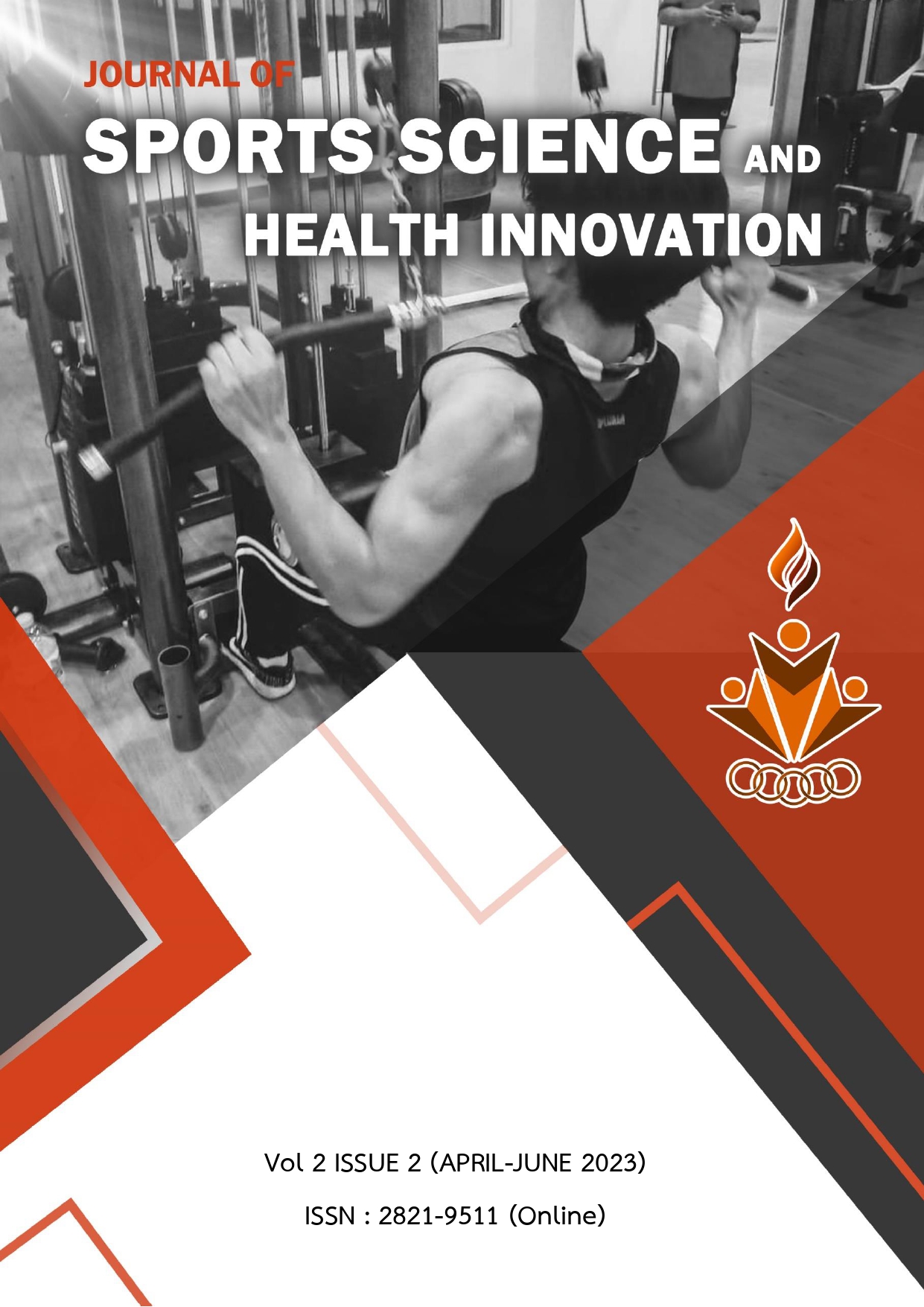THE ASSOCIATION OF HEALTH BELIEF MODEL AND DRUGS USING BEHAVIOR IN ASTHMA PATIENT, PRASAT HOSPITAL, PRASAT DISTRICT, SURIN PROVINCE
Main Article Content
Abstract
This study used descriptive study for examine the correlation between health belief model and drug using behavior in asthma patient at the asthma clinic in Prasad hospital, Prasad district, Surin province. Total samples in this study were 122 asthma patient that calculated by Daniel method. The questionnaire was used for collecting data. The data analysis was applied frequency, percentage, mean, standard deviation, and Pearson correlation coefficient. The statistical significance was set at the 0.05 level. The results of this revealed that 1) The samples were equal between sex. The mean age of sample was 50.39years. The highest age was 70 years. The youngest age was 15 years. Most of them were married 74.8%, primary school level 52.2%, farmer 59.84%, estimate salary 7,932.38 bath/ month. The highest salary was 80,000 bath/ month, and the lowest has no salary. The mean duration of asthma was 7.74 years. The highest duration of asthma was 42 years, and the lowest was 1 year. There was moderate level of opinions about the overall of health belief model ( = 3.48, SD = 0.425). There were two aspects with high level of opinions including 1) perceived severity of asthma disease ( =3.86, SD = 0.649) and 2) perceived benefit of asthma medications ( = 3.75, SD = 0.398). The aspects that had moderate level of opinions were 1) perceived risk of asthma complications ( = 3.61, SD = 0.510) and 2) perceived barriers to asthma medication use ( = 2.71, SD = 0.801). The overall of medication use behavior was high level ( = 3.87, SD = 0.388). There were four aspects with high mean scores of medication use behavior including 1) Right patient ( = 4.32, SD = 0.693), 2) Right dose ( = 4.03, SD = 0.810), 3) Right method ( = 4.13, SD = 0.564), and 4) Right time ( = 3.86, SD = 0.541). The moderate mean scores of medication use behavior were 1) Right drug ( = 3.42, SD = 0.693) and 2) Drug adherence ( = 3.48, SD = 0.522). They have a health belief model in the medium level ( = 3.48, SD = 0.425), and drug habit in the high level. 2) The correlation between health belief model and drug using behavior in asthma patient that shows perception of asthma severity (r = 0.429, p < 0.01), perception of barrier to use asthmatic drug (r = 0.438, p < 0.01), risk perception of asthma complication dimension (r = 0.227, p < 0.05) and perception of benefit when applied asthmatic drug (r = 0.211, p < 0.05)were statistically significant positive correlation with drug habit of asthmatic patient.
Article Details
เนื้อหาและข้อมูลในบทความที่ลงตีพิมพ์ในวารสารวิทยาศาสตร์การกีฬาและนวัตกรรมสุขภาพ กลุ่มมหาวิทยาลัยราชภัฏแห่งประเทศไทย ถือเป็นข้อคิดเห็นและความรับผิดชอบของผู้เขียนบทความโดยตรงซึ่งกองบรรณาธิการวารสาร ไม่จำเป็นต้องเห็นด้วย หรือร่วมรับผิดชอบใด ๆ
บทความ ข้อมูล เนื้อหา รูปภาพ ฯลฯ ที่ได้รับการตีพิมพ์ในวารสารวิทยาศาสตร์การกีฬาและนวัตกรรมสุขภาพ กลุ่มมหาวิทยาลัยราชภัฏแห่งประเทศไทย ถือเป็นลิขสิทธิ์ของคณะวิทยาศาสตร์และเทคโนโลยี มหาวิทยาลัยราชภัฏศรีสะเกษ หากบุคคลหรือหน่วยงานใดต้องการนำทั้งหมดหรือส่วนหนึ่งส่วนใดไปเผยแพร่ต่อหรือเพื่อกระทำการใด จะต้องได้รับอนุญาตเป็นลายลักษณ์อักษรจากวารสารวิทยาศาสตร์การกีฬาและนวัตกรรมสุขภาพ กลุ่มมหาวิทยาลัยราชภัฏแห่งประเทศไทย ก่อนเท่านั้น
References
ยุทธ ไกยวรรณ์. (2558). หลักสถิติวิจัยและการใช้โปรแกรม SPSS. กรุงเทพมหานคร: โรงพิมพ์แห่งจุฬาลงกรณ์มหาวิทยาลัย.
สมาคมสภาองค์กรโรคหืดแห่งประเทศไทย และคณะ. (2560). แนวทางการวินิจฉัยและรักษาโรคหืดในประเทศไทยสำหรับผู้ใหญ่ พ.ศ. 2560. นนทบุรี: บียอนด์ เอ็นเทอร์ไพรซ์.
World Health Organization. (2003). Chronic respiratory diseases. Retrieved 20 June 2022, from
http://www.who.int/respiratory/asthma/e
ทัชชภร หมื่นนิพัฒ. (2555). ปัจจัยที่มีอิทธิพลต่อพฤติกรรมการป้องกันโรคหืดในผู้ป่วยโรคหืด ที่มารับบริการในโรงพยาบาลระดับทุติยภูมิ จังหวัดนครปฐม (วิทยานิพนธ์พยาบาลศาสตรมหาบัณฑิต). นครปฐม: มหาวิทยาลัยคริสเตียน.
สุรเดช สำราญจิตต์. (2558). พฤติกรรมสุขภาพทางสาธารณสุข. กรุงเทพมหานคร: สำนักพิมพ์มหาวิทยาลัยรามคำแหง.
ชัญญานุช ไพรวงษ์ วรัญญู สัตยวงศ์ทิพย์ และภูนรินทร์ สีกุด. (2560). การศึกษาความเชื่อด้านสุขภาพกับพฤติกรรมการดูแลตนเองของผู้ป่วยโรคความดันโลหิตสูง อำเภอสูงเนิน จังหวัดนครราชสีมา. วารสารวิทยาลัยนครราชสีมา, 11(1), 107-116.
กัญญา จันทร์ใจ ธีรภรณ์ จันทร์ดา และอรสา พันธ์ภักดี. (2560). ปัจจัยที่มีความสัมพันธ์กับความสม่ำเสมอในการรับประทานยาของผู้ป่วยโรคเอส แอล อี. รามาธิบดีพยาบาลสาร, 19(1), 60-72.
ชลธิชา โชคเฉลิมวงษ์. (2555). ปัจจัยที่มีอิทธิพลต่อพฤติกรมการป้องกันโรคอุจจาระร่วงเฉียบพลันของผู้ปกครองเด็กเล็กอายุ 3-5 ปี ที่มีอุบัติการณ์ซ้ำซ้อน (วิทยานิพนธ์พยาบาลศาสตรมหาบัณฑิต). นครปฐม: มหาวิทยาลัยคริสเตียน.
ธมนพรรษ บุญเจริญ วนิดา ดุรงค์ฤทธิชัย และจริยาวัตร คมพยัคฆ์. (2558). ปัจจัยที่มีผลต่อพฤติกรรมการรับประทานยาในทหารที่เป็นโรคความดันโลหิตสูงชนิดไม่ทราบสาเหตุ. วารสารพยาบาลสาธารณสุข, 29(3), 50-56.
Danial, AC. & Veiga, EV. (2013). Factors that interfere the medication compliance in hypertensive patients. Einstein, 11(3), 331-337.
Best, WJ. (1997). Research in Education. Boston MA. : Allyn and Bacon.
Rovinelli, RJ. & Hambleton, RK. (1977). On the use of content specialists in the assessment of criterion-referenced test item validity. Tijdschrift voor Onderwijsresearch, 2(2), 49-60.
Rosenstock, MI., Strecher, VJ. & Becker, MH. (1988). Social learning theory and health belief model. Health Education Quarterly, 15(2), 75-138.


